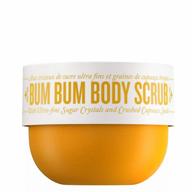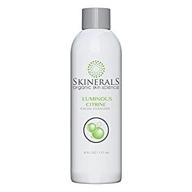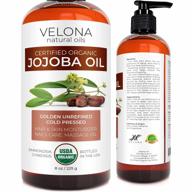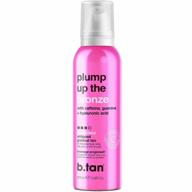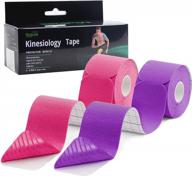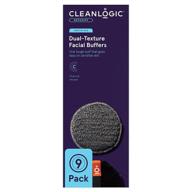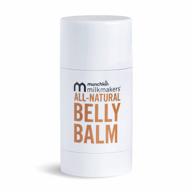How to prevent stretch marks during pregnancy?
Stretch marks are a common occurrence during pregnancy. Although not harmful, many want to avoid getting stretch marks. Here are some tips to help prevent stretch marks from developing during pregnancy:
Moisturize
Keeping skin moisturized can improve elasticity and prevent tearing. Use a heavy, hydrating moisturizer or belly butter that contains ingredients like cocoa butter, shea butter, olive oil, or coconut oil. Apply it daily after showering, bathing, or washing.
Exfoliate
Gently exfoliating 1-2 times per week can remove dead skin cells and improve circulation. Use a soft washcloth, brush, or exfoliating gloves. Avoid scrubs with rough particles. Focus on growing areas like the hips, thighs, and belly.
Massage
Massaging growing areas of the body can increase blood flow and stimulate collagen production. Use circular strokes and moderate pressure. Massage stretch mark prone areas like the belly, breasts, hips, and thighs for 5-10 minutes daily.
Stay hydrated
Drinking plenty of water keeps skin supple. Aim for 10-12 cups of fluids daily. Water helps maintain skin's elasticity.
Maintain a healthy weight
Gaining weight steadily and slowly can reduce the chances of stretch marks. Rapid weight gain causes skin to stretch quickly. Eat a balanced diet and gain weight gradually.
Exercise
Regular exercise promotes circulation and can strengthen and tone skin. Low impact exercises like walking, swimming, and yoga are great options during pregnancy.
Another interesting products
Consider topical creams
There are OTC creams containing vitamin E, collagen, elastin, and centella asiatica which can improve skin strength. Creams with hyaluronic acid provide moisture. Apply them daily to hydrated skin.
While genetics plays a role, consistently following these tips can help minimize the chances of stretch marks during pregnancy.
How to reduce the appearance of stretch marks?
If stretch marks have already developed, there are several methods that can help reduce their appearance:
Use topical creams
- Retinoid creams - Can stimulate collagen production and increase skin thickness.
- Alpha-hydroxy acids - Help exfoliate skin and improve tone and texture.
- Silicone gels or sheets - Can hydrate and smooth marks.
- Caffeine creams - May help break down fat cells and tighten skin.
Try cosmetic procedures
- Microdermabrasion - Gently exfoliates skin revealing newer skin underneath.
- Laser treatments - Target marks with laser light to rebuild collagen.
- Radiofrequency - Heats skin to stimulate collagen and tighten areas.
- Microneedling - Triggers skin remodeling and collagen growth.
Use home remedies
- Sugar scrubs - Removes dead skin cells and boosts collagen.
- Lemon juice - Natural acid exfoliates and fades discoloration.
- Aloe vera - Hydrates and soothes inflammation.
- Coconut oil - Softens and moisturizes skin.
Maintain healthy skin
- Moisturize daily to improve skin elasticity.
- Massage problem areas to increase blood flow.
- Drink plenty of water to hydrate skin.
- Avoid sun exposure which can darken marks.
Using creams consistently and trying different home or clinical treatments can help reduce the appearance of stretch marks over time. Preventing future stretch marks is also key for smooth, healthy skin.
How to tighten loose skin after pregnancy?
It's common for skin to feel loose and saggy after pregnancy. Fortunately, there are steps you can take to help tighten and firm up postpartum skin:
Similar products
Give it time
Allow skin time to naturally retract, especially if you are breastfeeding. Skin can take 6 months to a year to tighten after giving birth. Stay hydrated and be patient.
Top products in 🤰 Maternity
Improve diet
Eat a balanced diet rich in protein, vitamins C, E, and collagen. Salmon, nuts, leafy greens, citrus fruits, and berries deliver skin-strengthening nutrients.
Exercise
Tone up loose skin by building muscle. Do targeted strength training for problem areas like the arms, thighs, and abs. Yoga and pilates can also help.
Use firming creams
Look for products containing peptides, retinoids, alpha hydroxy acids, or caffeine. Massage ointments containing collagen and elastin into stretch mark prone areas.
Try devices
- Radiofrequency treatments heat tissue and stimulate collagen.
- Ultrasound devices target deep skin layers using sound waves.
- LED light therapy boosts collagen growth to firm skin.
Consider procedures
- Laser skin resurfacing removes outer layers and tightens underlying skin.
- Microneedling creates tiny punctures that stimulate collagen.
- Body contouring surgery trims excess loose skin (tummy tuck, etc.).
Consistency is key when trying to tighten skin after pregnancy. Stick to a routine of healthier eating, exercise, topical creams, and professional treatments if needed.
How to improve skin elasticity?
Maintaining elasticity allows skin to stretch without damage and snap back into place. Here are some ways to increase skin elasticity:
Moisturize skin
Hydrating skin regularly prevents dryness and improves elasticity. Look for moisturizers with hydrating ingredients like hyaluronic acid, glycerin, shea butter, and ceramides.
Exfoliate
Gently sloughing off dead cells promotes cell turnover. Use a soft washcloth, dry brushing, or chemical exfoliants like lactic acid 2-3 times per week.
Eat collagen-boosting foods
- Berries
- Citrus fruits
- Leafy greens
- Beans
- Garlic
- Avocados
Apply collagen creams
Look for lotions containing collagen molecules small enough to absorb into the skin and provide lasting hydration.
Wear sunscreen
UV exposure damages collagen and elastin fibers. Daily broad spectrum sunscreen prevents further breakdown.
Quit smoking
Smoking destroys collagen. Avoiding smoke and tobacco helps skin stay smoother.
Manage stress
High stress levels increase cortisol which can degrade collagen. Try relaxing activities like meditation, yoga, or massage.
Following a complete skin care routine with hydration, nutrition, and protection from the sun and smoke gives the best chance for improving elasticity long-term.
How to hydrate dry pregnant belly skin?
During pregnancy, a growing belly can lead to tight, dry, itchy skin. Properly hydrating this delicate area is important. Here are some tips:
Use thick, rich moisturizers
Look for products containing ingredients like shea butter, cocoa butter, olive oil, avocado oil, almond oil, or coconut oil. Avoid creams with harsh fragrances or dyes.
Exfoliate gently 1-2 times per week
Removing dead skin allows moisturizers to absorb better. Use a soft washcloth or brush. Avoid harsh scrubs.
Apply oils
Natural oils like olive, almond, jojoba, or coconut soak in well and hydrate while improving skin elasticity.
Mix up DIY scrubs
- Combine coconut oil with brown sugar or oats.
- Mix olive oil with sea salt or coffee grounds.
- Stir yogurt with honey and lemon juice.
Look for products with colloidal oatmeal
Oatmeal soothes itchy, inflamed skin while locking in moisture.
Avoid very hot showers
Limit showers to 5-10 minutes with lukewarm water. Hot water strips natural oils.
Hydrate from the inside
Drink at least 8 glasses of water daily to hydrate skin cells from within. Eat juicy fruits and veggies too.
Protect skin daily with sunscreen
Sun exposure can lead to drier, itchier skin. Use a broad spectrum SPF 30 or higher sunscreen.
Using the right moisturizing products and ingredients can keep pregnant belly skin soft, supple, and hydrated.
How to minimize pregnancy skin issues?
Pregnancy brings along many changes, including to the skin. Some ways to minimize common pregnancy skin issues:
Moisturize and nourish
Dryness and itching can be common. Use thick creams and oils high in vitamin E, shea butter, and cocoa butter. Coconut oil hydrates and soothes.
Exfoliate
Gently remove dead cells 1-2 times per week to reveal fresh skin. Use a soft washcloth, dry brush, or chemical exfoliant. Avoid overly harsh scrubs.
Treat stretch marks
- Moisturize daily to improve skin elasticity in prone areas.
- Massage vitamin E or retinol creams into marks.
- Consider laser or microneedling treatments to boost collagen.
Prevent acne
- Use oil-free, non-comedogenic products.
- Avoid frequent washing which can dry out skin.
- Spot treat pimples with benzoyl peroxide or salicylic acid.
- See a dermatologist about prescription options if acne is moderate to severe.
Reduce melasma
- Always wear broad spectrum sunscreen to limit sun exposure.
- Try over-the-counter lightening creams with soy, kojic acid, etc.
- Have a derm prescribe stronger fading creams if OTC aren't effective.
Soothe skin
Oatmeal baths, aloe vera gel, and cool compresses can relieve itchy, inflamed skin. Avoid scratching.
Eating a healthy diet, staying hydrated, and managing stress levels also benefit your overall skin health during pregnancy. See a doctor about any severe or persistent skin issues.









